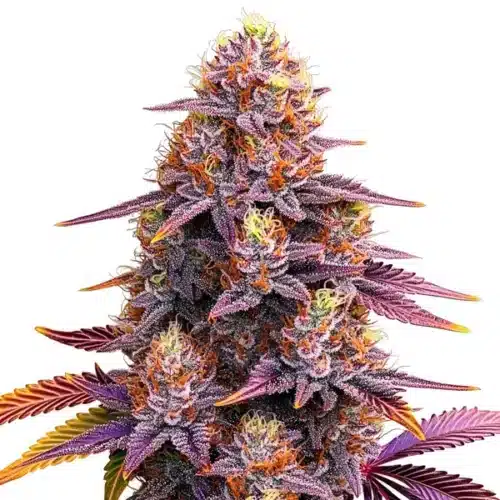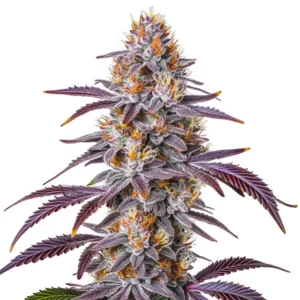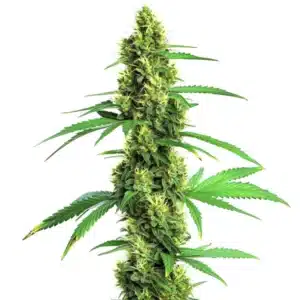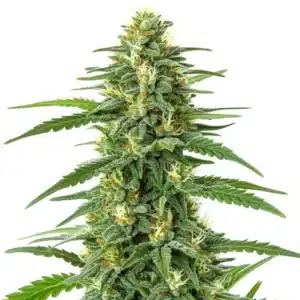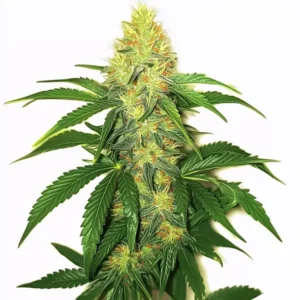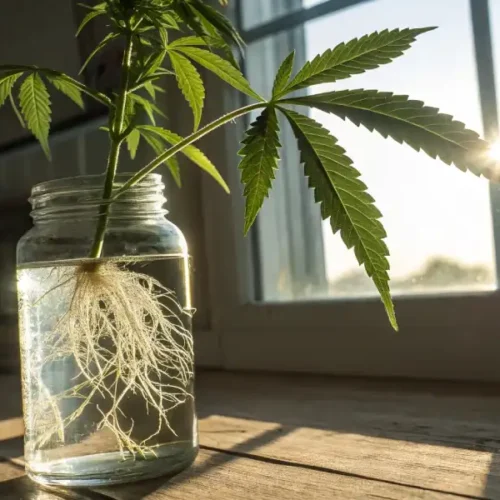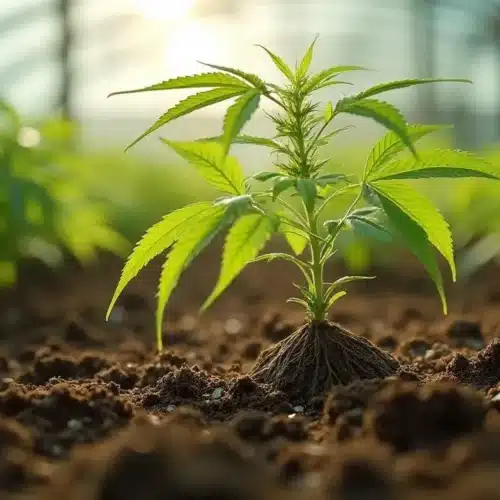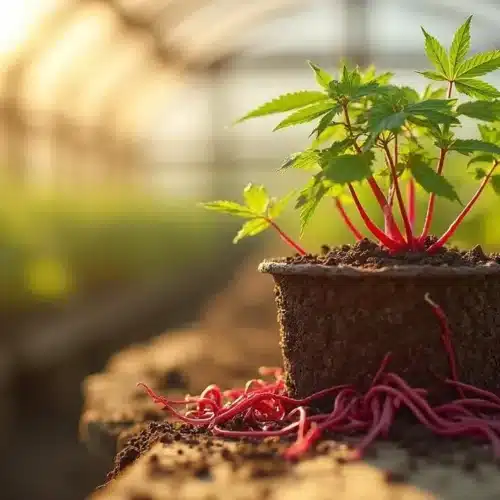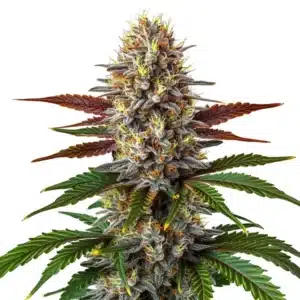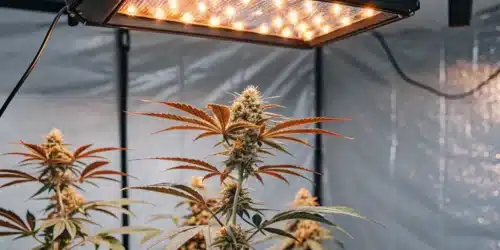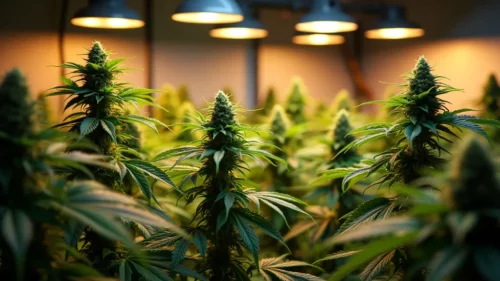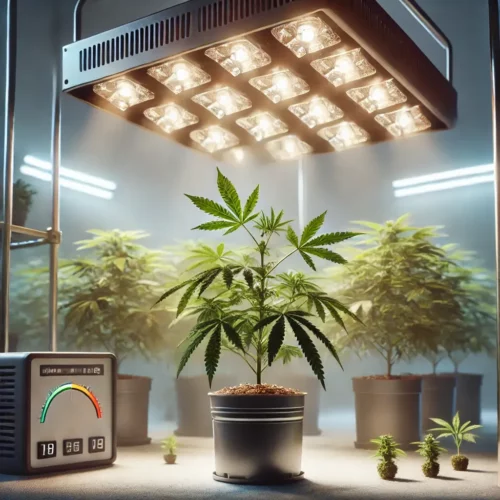The cultivation of cannabis has evolved significantly with advances in technology, particularly in the area of grow lights. The right lighting is crucial for the optimal growth and flowering of cannabis plants. Among the various options available, LED grow lights for cannabis have emerged as a leading choice for cultivators seeking efficiency, effectiveness, and sustainability. This comprehensive guide delves into the world of cannabis grow lights, emphasizing the benefits of LED technology and how to avoid common pitfalls like light burn in cannabis.
The Crucial Role of Lighting in Cannabis Photosynthesis
Light is the primary energy source for cannabis plants, driving the photosynthesis process that converts light, carbon dioxide, and water into glucose and oxygen. This process is not just fundamental for growth but also for the development of potent buds rich in cannabinoids. The quality of light, including its intensity, spectrum, and duration, directly impacts the efficiency of photosynthesis, influencing the plant’s growth rate, structural development, and the eventual yield and potency of the cannabis.
Recommended Strains
Cannabis Growing Lights: A Technological Evolution
The advent of LED grow lights marked a significant evolution in cannabis cultivation practices. These lights offer a spectrum tailored to the plant’s specific needs at various stages of growth, from vegetative to flowering. Unlike traditional lighting solutions, which emit a broad spectrum, LED grow lights for cannabis can be adjusted to emit specific wavelengths, enhancing photosynthesis and promoting healthier, more productive plants. This ability to customize the light spectrum allows cultivators to mimic the sun’s natural light changes from season to season, optimizing growth conditions indoors.
Spectrum Specificity and Its Impact on Cannabis Growth
The importance of specific light spectra cannot be overstated in cannabis cultivation. Blue spectrum lights, predominant during the vegetative stage, support robust leaf and stem growth, setting the stage for a fruitful flowering period. As plants transition to the flowering stage, red spectrum lights encourage bud formation and flowering, crucial for a successful harvest. LED grow lights for cannabis excel in providing these specific spectra, enabling growers to optimize their lighting strategy for each growth phase.
Intensity and Duration: Balancing Act for Optimal Growth
The intensity and duration of light exposure also play critical roles in cannabis cultivation. Too little light can lead to weak, underdeveloped plants, while too much light can cause stress, leading to issues like light burn cannabis. LED grow lights allow for precise control over light intensity, ensuring that plants receive the optimal amount of light without the risk of damage. Furthermore, the ability to control the duration of light exposure enables growers to simulate natural day-night cycles, essential for triggering the flowering process in cannabis.
Preventing Light Burn in Cannabis with LED Technology
Light burn, a common issue in the realm of cannabis growing lights, occurs when the intensity or proximity of light causes damage to the plant leaves, significantly affecting plant health and yield. Symptoms include yellowing or bleaching of the leaves, often mistaken for nutrient deficiencies. Among the solutions within the cannabis growing lights category, LED grow lights for cannabis stand out due to their lower heat output and adjustable intensity. This characteristic of LED lights addresses the challenge of light burn effectively. By carefully managing the placement and intensity of LED lights, growers can mitigate the risk of light burn. This strategic approach ensures that cannabis plants receive all the benefits of optimal lighting—central to the concept of cannabis growing lights—without the associated risks. The adaptability and efficiency of LED technology in the context of cannabis growing lights not only prevent common problems like light burn but also underscore the importance of selecting the right lighting solutions for successful cannabis cultivation.
Proper lighting in cannabis cultivation, often referred to as “Cannabis Growing Lights,” is an essential factor that cannot be overstated. It forms the foundation upon which successful cultivation is built, profoundly influencing every facet of plant growth and development. LED grow lights for cannabis stand at the forefront of lighting technology, offering unmatched control over light spectra, intensity, and duration. By leveraging the advancements in LED technology, cultivators can circumvent common challenges such as light burn, thereby ensuring the cultivation of healthier plants, achieving higher yields, and producing superior quality cannabis. As the cannabis cultivation industry advances and grows, the importance of adopting advanced lighting solutions like LED grow lights and exploring the wider category of Cannabis Growing Lights is increasingly clear. This highlights the essential connection between innovative technology and the natural processes that drive cannabis cultivation, guiding the way toward a more efficient, effective, and sustainable future in cannabis horticulture.
Promos & Deals
How Cannabis Growing Lights Contribute to Cultivation Success
Photosynthesis in Cannabis
Photosynthesis is the lifeblood of cannabis cultivation, converting light into the energy needed for growth and development. Cannabis growing lights play a pivotal role in this process, providing the essential spectrum and intensity of light that mimic the sun’s natural rays. The quality of light not only influences the rate of photosynthesis but also affects the plant’s biological processes, including flowering and cannabinoid production.
Spectrum Specificity and Plant Growth
The term “Cannabis Growing Lights” encompasses a range of lighting technologies, but LED grow lights have taken the forefront due to their spectrum specificity. Different stages of the cannabis life cycle require different light spectrums. For instance, the vegetative growth of cannabis thrives under lights with more blue spectrum, which promotes strong, healthy stems and leaves. Conversely, the flowering stage benefits from red spectrum light, encouraging the buds to develop and mature. This specificity underscores the importance of choosing the right cannabis growing lights to ensure plants receive the appropriate signals for their growth phase.
Intensity and Light Penetration
Apart from spectrum, the intensity of cannabis growing lights is crucial. Light intensity influences the depth of light penetration into the canopy, affecting lower branches and leaves. Adequate light penetration ensures that all parts of the plant receive sufficient light, promoting uniform growth and preventing the underdevelopment of lower buds. This balance is delicate, as too much intensity can lead to light burn, a common issue where leaves closest to the light source may discolor or curl, hampering photosynthesis and overall plant health.
The Photoperiod and Its Impact on Cannabis Cultivation
Cannabis plants are photoperiod sensitive, meaning they rely on changes in the light cycle to transition from the vegetative stage to the flowering stage. Cannabis growing lights offer cultivators the ability to manipulate these light cycles artificially, inducing flowering at the optimal time to maximize yield and potency. This control is particularly advantageous in indoor cultivation setups, where natural light cycles are not a limiting factor.

Energy Efficiency and Cost-Effectiveness
The evolution of cannabis growing lights, particularly LEDs, has significantly reduced the energy consumption and heat generation associated with indoor cannabis cultivation. This efficiency translates into lower operational costs and a reduced environmental footprint, making sustainable cultivation practices more accessible. The initial investment in high-quality LED grow lights pays off in the long run through energy savings and increased yield, emphasizing the economic importance of selecting the right lighting system for cannabis cultivation.
Advantages of LED Grow Lights for Cannabis: A Deep Dive
The cultivation of cannabis under controlled conditions has been revolutionized by the advent of LED grow lights. These lights have become indispensable in the industry, providing numerous benefits that directly impact the health, growth rate, and yield of cannabis plants. Let’s explore these advantages in detail, underscoring why LED grow lights are the preferred choice for modern cannabis growers.
Enhanced Spectrum Control for Optimal Growth
One of the standout features of LED grow lights is their ability to produce a wide spectrum of light. This is crucial for cannabis cultivation, as different stages of plant growth require different light spectra. LEDs can be fine-tuned to emit specific wavelengths to mimic the sun’s natural spectrum, offering the perfect balance of blue, red, and far-red light. This precision ensures that cannabis plants receive the ideal light for photosynthesis, vegetative growth, and flowering, directly influencing potency and yield.
Significant Energy Savings
LED grow lights are renowned for their energy efficiency, consuming substantially less power than traditional HPS or MH lights. This efficiency translates into lower electricity bills, making LED technology a cost-effective solution for cannabis growers. Moreover, the lower energy consumption of LEDs contributes to a smaller carbon footprint, aligning with eco-friendly cultivation practices.
Reduced Heat Output
The issue of heat management is a critical concern in indoor cannabis cultivation. Excessive heat can lead to problems such as light burn cannabis, dehydration, and stressed plants. LED grow lights have a distinct advantage in this area, as they generate significantly less heat than their traditional counterparts. This reduced heat emission minimizes the risk of thermal stress on cannabis plants, allowing for closer placement to the canopy without the fear of light burn. It also reduces the need for extensive cooling systems, further lowering operational costs.
Durability and Longevity
Durability is another key advantage of LED grow lights. With lifespans often exceeding 50,000 hours, LEDs outlast traditional grow lights, ensuring reliability and consistency in cannabis cultivation. This longevity reduces the need for frequent replacements, saving time and money in the long run. Additionally, the robustness of LED technology means less maintenance and fewer interruptions to the grow cycle, contributing to a more efficient cultivation process.
Tailored Light Recipes for Enhanced Yields
Advanced LED grow lights offer the possibility of creating “light recipes” tailored to specific cannabis strains. This innovative approach allows growers to adjust the light intensity, spectrum, and photoperiod to meet the unique needs of each strain, optimizing growth conditions for enhanced cannabinoid profiles, terpene levels, and yields. The ability to customize light recipes is a game-changer in cannabis cultivation, enabling precision agriculture practices that can significantly improve the quality and quantity of the harvest.
Preventing Light Burn with Cannabis Growing Lights: LED Technology
In the realm of Cannabis Growing Lights, LED technology stands out for its efficiency and control, offering a sustainable solution to a common challenge faced by cultivators: light burn. To mitigate the risk of light burn while harnessing the benefits of LED grow lights for cannabis, growers are advised to adopt the following practices:
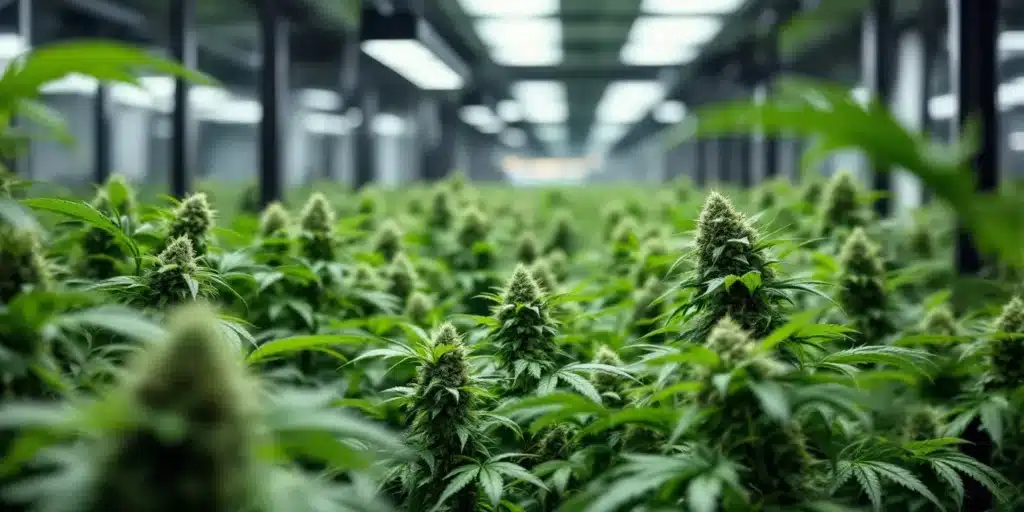
Adjust the Height for Optimal Light Exposure
Maintaining an optimal distance between LED cannabis growing lights and the plant canopy is crucial. This distance should be adjusted according to the light’s intensity and the specific growth stage of the cannabis plant, ensuring that each plant receives the appropriate amount of light without the risk of damage.
Monitor Light Intensity with Precision
Utilizing a light meter becomes indispensable in the precise cultivation of cannabis under LED growing lights. By monitoring the intensity of light, especially during the sensitive flowering stage, cultivators can ensure that their plants receive the perfect balance of light—enough to thrive without succumbing to light burn.
Implement Gradual Adjustment to Foster Acclimation
The principle of gradual adjustment is key when increasing the intensity of LED cannabis growing lights. This method allows cannabis plants to acclimate to changes in light exposure, minimizing stress and preventing the adverse effects of sudden light intensity shifts, thereby reducing the likelihood of light burn.
Observe Plant Response to Optimize Light Settings
Regular observation of plant response under LED cannabis growing lights is essential for timely adjustments. By being vigilant and responsive to the first signs of light burn, cultivators can modify light settings to ensure optimal plant health and vigor, demonstrating the adaptability and benefits of LED technology in cannabis cultivation.
Incorporating these strategies within the framework of Cannabis Growing Lights not only emphasizes the importance of LED grow lights in the prevention of light burn but also highlights the grower’s role in leveraging technology for successful cannabis cultivation.

Best Practices for Using LED Grow Lights in Cannabis Cultivation
The adoption of LED grow lights has become a cornerstone in the realm of cannabis growing lights, transforming the way cultivators approach the indoor cultivation of cannabis. To maximize the potential of LED technology and ensure the healthiest growth and highest yields, adhering to best practices is essential. Below are refined strategies incorporating “Cannabis Growing Lights” to guide both novice and experienced growers.
Start with a Comprehensive of Your Lights
Before incorporating LED technology into your cannabis cultivation, it’s essential to be well-informed about the capabilities and specifications of your LED grow lights. This covers the light’s intensity, spectrum, and coverage area, all of which play a key part in shaping your cultivation strategy to match the specific needs of your cannabis plants at each growth stage.
Tailor the Light Environment to Cannabis Growth Stages
The versatility of LED cannabis growing lights allows growers to adjust the lighting environment according to the distinct stages of cannabis growth. During the vegetative stage, a spectrum rich in blue light encourages leafy growth, while the flowering stage benefits from a red-rich spectrum to promote budding. Utilizing the full spectrum capabilities of LED grow lights optimizes photosynthesis efficiency and supports robust plant development.
Implement Efficient Light Management Strategies
Efficient light management is key to leveraging the advantages of LED grow lights for cannabis. This involves:
- Adjusting Height: Properly spacing your LED grow lights from the plant canopy is critical to avoid light burn and ensure even light distribution. The ideal height varies depending on the light model and the growth stage, requiring continuous adjustment as plants mature.
- Controlling Photoperiods: Cannabis plants respond to changes in the light cycle. Managing photoperiods with precision—providing longer light exposure during the vegetative stage and shorter during the flowering phase—can significantly impact plant health and yield.
- Monitoring Light Intensity and Duration: Use light meters to monitor the intensity and ensure that your cannabis plants receive the optimal amount of light, mimicking the natural solar cycle as closely as possible.
Ensure Regular Maintenance and Calibration
To sustain the efficiency and effectiveness of cannabis growing lights, regular maintenance and calibration of LED grow lights are imperative. Cleaning the lights to remove dust and debris ensures maximum light output, while periodic calibration helps maintain the accuracy of light intensity and spectrum, contributing to consistent plant growth.
Stay Informed on the Latest LED Grow Light Innovations
The technology behind LED grow lights for cannabis is rapidly evolving. Staying informed about the latest developments can provide opportunities to adopt new features that further optimize growth conditions, enhance yields, and improve energy efficiency. Engaging with a community of growers, attending industry seminars, and reading up on the latest research are excellent ways to keep your cultivation practices at the cutting edge.
Optimizing LED Grow Lights for Different Growth Stages
The ability to control the spectrum of LED grow lights allows for precise management of the light environment according to the cannabis plant’s growth stage.
Cannabis Growing Lights: Seedling Stage
During this initial phase, cannabis plants require blue spectrum light, which promotes strong root development and sturdy stem growth. LED lights should be set to emit a cooler, more vegetative light spectrum and positioned further away from the seedlings to prevent light burn.
Cannabis Growing Lights: Vegetative Stage
As plants enter the vegetative stage, they benefit from intense blue light, encouraging leafy growth and preparing them for flowering. The distance between the lights and the plants can be decreased slightly as the plants grow taller, but it’s crucial to monitor for signs of light burn and adjust accordingly.
Cannabis Growing Lights: Flowering Stage
The flowering stage demands a shift to a warmer, red light spectrum to stimulate bud development. This is when the risk of light burn increases as growers tend to maximize light intensity to boost yield. It’s essential to find a balance that promotes optimal flowering without causing stress or damage to the plants.
Addressing Common Challenges with LED Grow Lights
Despite their benefits, growers may encounter challenges when using LED grow lights for cannabis. These issues can lead to more effective cultivation strategies.
Cannabis Growing Lights: Spectrum Adjustment
Finding the optimal light spectrum for different cannabis strains and growth stages requires experimentation and observation. Growers should document plant responses to various light settings and adjust their approach based on empirical results.
Cannabis Growing Lights: Managing Heat
Although LED grow lights emit less heat than traditional lamps, they still produce some heat that needs to be managed, especially in small or enclosed grow spaces. Adequate ventilation and air circulation are essential to prevent hot spots and ensure uniform temperature distribution.
Cannabis Growing Lights: Cost vs. Quality
The initial investment in high-quality LED grow lights can be significant, but cheaper alternatives may not provide the same efficiency or spectrum control. Growers should consider the long-term benefits of investing in reputable brands that offer durability and optimal plant growth conditions.
Future Trends in Cannabis Grow Lighting Technology
Advancements in LED technology and research into plant physiology are driving innovation in grow lighting solutions for cannabis cultivation.
Customizable Spectrums
Future LED grow lights may offer even more customizable spectrum options, allowing growers to tailor lighting conditions to the specific needs of each cannabis strain, potentially via smart technology interfaces.
Energy Efficiency Improvements
As LED technology continues to evolve, newer models are expected to become even more energy-efficient, reducing electricity costs and environmental impact for growers.
Integrated Grow Systems
The integration of LED grow lights with automated systems for watering, nutrient delivery, and climate control is on the horizon. Such systems would provide a fully optimized growing environment, maximizing yield and quality with minimal manual intervention.
Embracing the Future with LED Grow Lights
The shift towards LED grow lights in cannabis cultivation reflects a broader trend towards sustainable, efficient, and precision-driven agriculture. The advantages of LED grow lights for cannabis — from energy savings and reduced heat output to enhanced spectrum control and durability — make them an essential tool for any serious grower. As technology continues to advance, the potential for even greater efficiencies and customization offers exciting prospects for the future of cannabis cultivation.
By leveraging the power of LED grow lights, cannabis growers can achieve superior results, optimizing every aspect of their cultivation process to produce high-quality, potent, and abundant harvests. The future is bright for cannabis cultivation, illuminated by the advanced capabilities of LED grow lighting technology.


